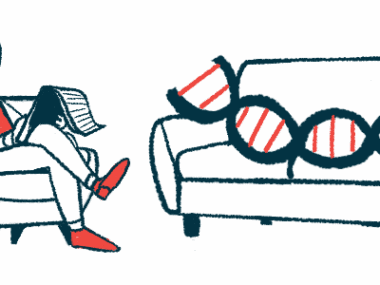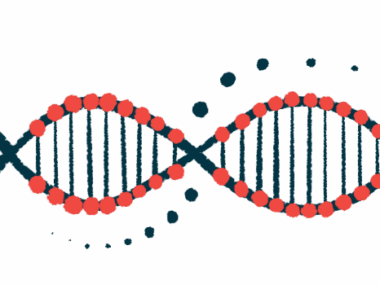Approved antiviral medicine shows promise in RDEB mouse model
Daclatasvir shown to safely ease RDEB symptoms in drug repurposing study
Written by |

Daclatasvir, an approved antiviral medicine, safely reduced the signs and symptoms of recessive dystrophic epidermolysis bullosa (RDEB) in a mouse model, a drug repurposing study revealed.
Data showed that the antiviral, a treatment for the hepatitis C virus (HCV) sold under the brand name Daklinza, extended RDEB mouse survival and improved quality of life for the animals, as indicated by weight gain, reduced hair loss, and greater overall activity.
“Daclatasvir is a potential therapeutic option that could improve life quality for patients with the devastating disease RDEB,” the scientists wrote, calling the oral antiviral medicine their “hit compound of interest.”
The study, “Antiviral drugs prolong survival in murine recessive dystrophic epidermolysis bullosa,” was published in the EMBO Molecular Journal.
Antiviral medicine daclatasvir ID’d after screening 43 compounds
RDEB is characterized by a lack of the connective tissue protein collagen type VII, which leads to fragile skin that easily blisters. Hard-to-heal skin wounds often cause inflammation and fibrosis, or excessive scar tissue buildup.
Drug repurposing, in which approved medications are tested for efficacy in new indications, represents a rapid, cost-effective approach to therapeutic development.
Following this method, a team led by scientists at Thomas Jefferson University, in Pennsylvania, screened a library of 1,443 medicines approved by the U.S. Food and Drug Administration (FDA) against a specially designed cell-based fibrosis model.
Fibrosis is marked by the disorganization of collagen fibers and excessive deposits in the extracellular matrix (ECM), a network of molecules that surrounds cells and gives them support and structure. The team used RDEB patient fibroblasts, the connective tissue cell type that produces collagen, to detect compounds with anti-fibrotic activity.
Screening detected 43 compounds with anti-fibrotic properties in two RDEB populations. These compounds fell into three major categories: steroids, inhibitors of kinase enzymes, and antivirals/antimalarials.
“The steroid and kinase inhibitor hits provided validation as positive controls since all have published literature supporting their anti-fibrotic effects, further validating our assay [test] as a fibrosis surrogate,” the scientists wrote.
Among the antivirals/antimalarials, three compounds — daclatasvir, idoxuridine, and sofosbuvir — consistently demonstrated efficacy in both RDEB cell populations. Meanwhile, chloroquine, mefloquine, and rilpivirine showed a wide range of responses among the populations. None of these medications affected the number of healthy fibroblasts, even at high concentrations.
Treated mice retained more hair, indicating less skin itchiness
Daclatasvir and idoxuridine were chosen for further study because they were the most potent and showed a dose response. Both compounds were found to lower collagen production by reducing the signaling activity of TGF-beta1, a molecule known to drive RDEB-associated fibrosis.
The team then found that only the antiviral medicine daclatasvir could reduce the levels of hydroxyproline, a component of collagen, in the cell growth media in a way similar to that of non-RDEB cells.
Our study provides the rationale for the use of daclatasvir as a noninvasive, potentially inexpensive, and reliable therapy option for RDEB that has previously been FDA-approved for treatment in [hepatitis C].
To test its efficacy in a living animal, daclatasvir (30 mg/kg) was administered in drinking water to an RDEB mouse model modified to lack collagen type VII.
Compared with untreated mice, daclatasvir reduced the likelihood of dying by almost fivefold in the first 100 days and promoted more energetic activity at 60 days, a “strong indication of increased life quality,” the scientists wrote.
Daclatasvir-treated mice maintained 31.4% more weight than untreated mice and retained more hair, indicating less itchiness and scratching of the skin. The fusion of fingers, a sign of RDEB in mice, was delayed but not completely stopped with daclatasvir. Moreover, two markers of fibrosis were significantly reduced in the skin with daclatasvir treatment.
“Overall, our study provides the rationale for the use of daclatasvir as a noninvasive, potentially inexpensive, and reliable therapy option for RDEB that has previously been FDA-approved for treatment in HCV,” the researchers concluded.







